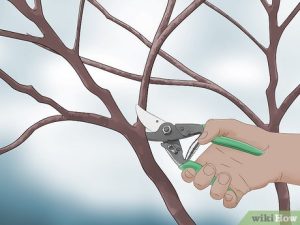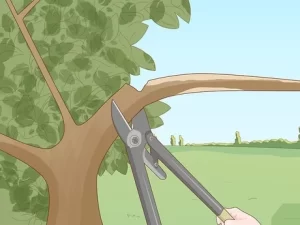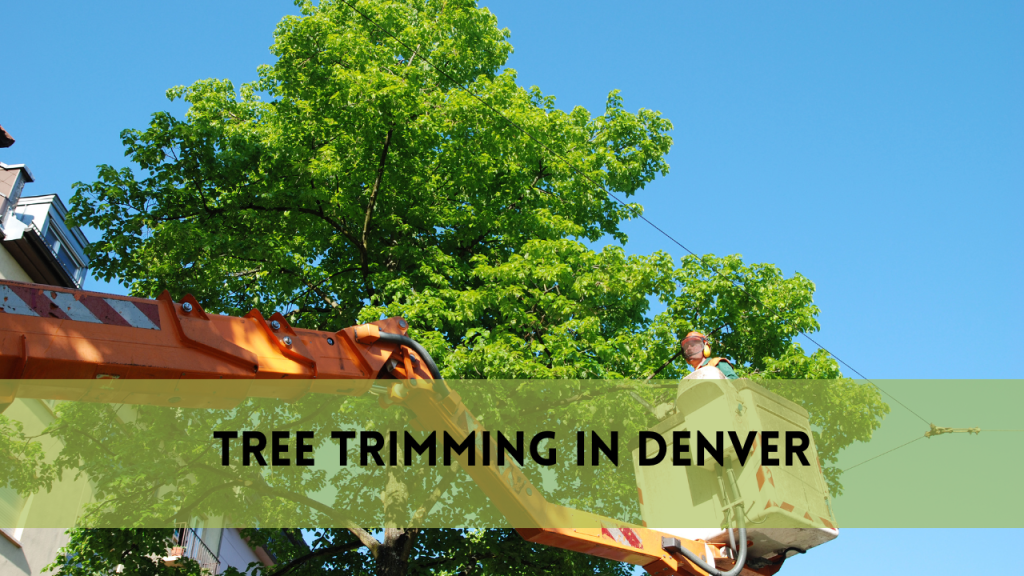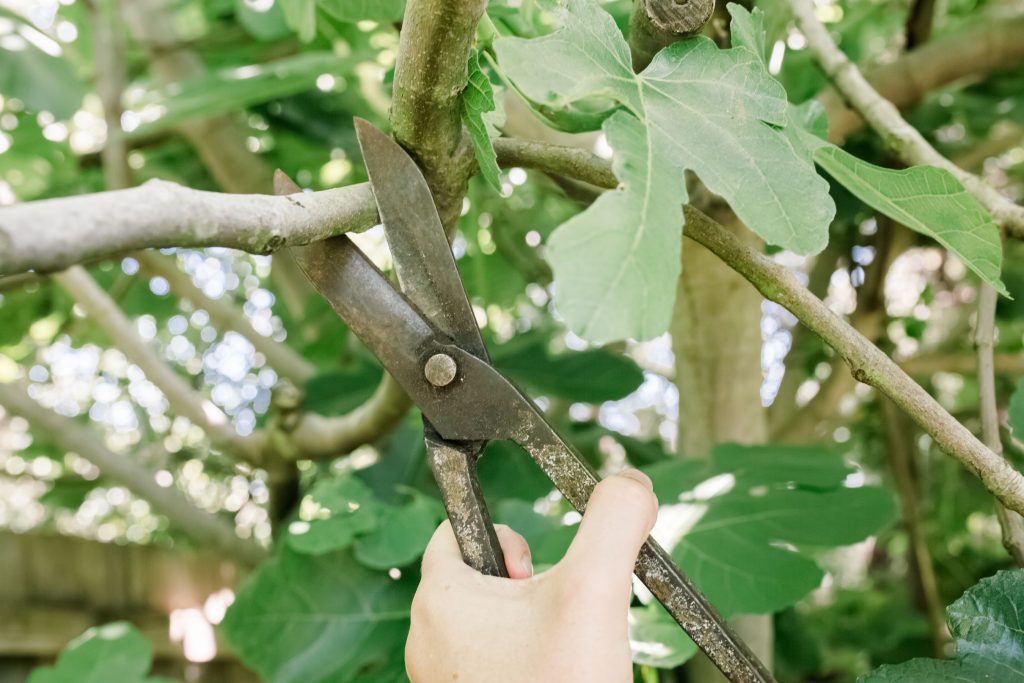How to Trim a Redbud Tree?
Redbud trees (Cercis spp.) are known for their striking spring sprouts, heart-molded leaves, and exceptional, outwardly engaging structure. Notwithstanding, similar to all trees, they require legitimate consideration to keep up with their wellbeing, excellence, and underlying trustworthiness. One fundamental part of really focusing on redbud trees is managing or pruning. In this complete aide, we will investigate the craftsmanship and study of trim a redbud tree. Whether you’re a carefully prepared grounds-keeper hoping to invigorate your insight or a fledgling mortgage holder anxious to really focus on the redbud gracing your property, this guide will furnish you with the information and abilities to keep a prospering redbud tree.
Trimming permits you to shape the tree as indicated by your inclinations, whether It’s making a clean, reduced structure or empowering a more normal, open overhang. Eliminating dead or sick branches forestalls the spread of infections. Standard managing lessens the gamble of falling branches or appendages, guaranteeing the wellbeing of individuals and property nearby. Key pruning can invigorate new development and bloom creation, improving the tree’s general essentialness. Before we jump into the points of interest of managing a redbud tree, it’s fundamental to be ready with the right devices and gear. With the information and devices close by, you’ll be prepared to set out on an excursion of really focusing on your redbud tree, guaranteeing it flourishes into the indefinite future. We should begin by understanding redbud trees and their remarkable qualities.
Understanding Trim a Redbud Trees
Attributes of Redbud Trees
Redbud trees, deductively known as Cercis spp., are dearest for their eye-getting magnificence and unmistakable highlights. To really manage a redbud tree, understanding its characteristics is significant:


Spring Sprouts: One of the most charming highlights of redbud trees is their productive spring sprouting. Groups of little, pink to purplish-pink blossoms enhance the branches before leaves show up, making a stunning presentation.
Structure and Size: Redbud trees can be medium-sized deciduous trees, ordinarily going from 20 to 30 feet in level. They have an adjusted or container-like shape, which can be kept up with through legitimate Trimming.
Developing Circumstances: Redbud trees flourish in different soil types, however they lean toward all around depleted soil. They are likewise moderately dry season lenient once settled, making them reasonable for different districts.
Light Prerequisites: These trees perform best in inclined toward full daylight. Sufficient daylight is fundamental for strong development and blossoming.
Explanations behind Trimming a Redbud Tree
Forming and Feel: Managing permits you to shape the tree to accommodate your scene plan inclinations. Whether you need a more minimal and manicured appearance or a characteristic, open overhang, pruning can accomplish your ideal look.
Eliminating Dead or Ailing Branches: Redbud trees, similar to all plants, can foster dead or infected branches over the long haul. Managing these branches is fundamental to forestall the spread of illness and keep up with the general soundness of the tree.
Working on Primary Respectability: Managing can address underlying issues by eliminating frail or crossed branches that might represent a gamble of breaking or falling. This guarantees the drawn out solidness of the tree.
Improving Blossom Creation: Key trimming can invigorate new development and further develop blossom creation. Appropriate pruning empowers the improvement of new branches and buds, prompting more productive sprouts.
When to Trim Redbud Trees
Picking the Perfect Opportunity of Year
Timing is basic with regards to managing redbud trees. Pruning at some unacceptable time can pressure the tree and possibly undermine its wellbeing.
Pre-spring to Spring early: The ideal opportunity to manage redbud trees is during pre-spring to late-winter, regularly in late February to Spring early. This period, before the tree begins to blossom, is known as the lethargic season. During lethargy, the tree is less powerless against infections and irritations, and seeing the tree’s design without the interruption of leaves is simpler.
Abstain from Trimming in Pre-summer and Summer: Abstaining from trimming in pre-summer and summer when the tree is effectively developing and in full bloom is by and large best. Trimming during this period can prompt pressure and may lessen the next year’s blooming show.
Fall Trimming: While fall trimming should be possible in specific circumstances, it’s not the favored time for redbud trees. Fall pruning might eliminate the branches where the following year’s blossoms will arise, prompting less sprouts in the spring.
Occasional Contemplations
Stay away from Outrageous Climate: Outrageous atmospheric conditions, like exceptionally hot or freezing, areas of strength for temperatures, or weighty downpour, can add pressure to the tree. Attempt to plan managing on gentle, quiet days.
Recuperation Period: Remember that managing a tree requires some recuperation time. You believe that the tree should recuperate and develop new branches before the following developing season, which is the reason managing in pre-spring or late-winter is great.
Youthful versus Mature Trees: Youthful redbud trees might profit from more regular light pruning in their initial not many years to energize legitimate construction. As the tree develops, the recurrence of trimming can be diminished.
Ordinary Investigation: No matter what the season, it’s a decent practice to consistently examine your redbud tree for indications of unhealthy or dead branches. These ought to be taken out when they are seen to keep issues from deteriorating.
Apparatuses and Hardware Required to Trim a Redbud Tree
Fundamental Apparatuses for Managing Redbud Trees
Pruning Shears (Hand Pruners): Hand pruners are utilized for cutting little branches and twigs that are under 1 inch in distance across. They give more noteworthy control and are great for accuracy cuts.
Loppers: Loppers have longer handles than hand pruners, which give additional influence to slicing branches up to 1.5 creeps in breadth. They are reasonable for thicker branches.
Pruning Saw: A pruning saw is fundamental for eliminating bigger branches that are excessively thick for pruners or loppers. Search for a saw with sharp, sturdy teeth for productive cutting.
Shaft Pruners or Post Saws: These devices are helpful for arriving at higher branches securely. They consist of a long shaft with a pruner or saw connected as far as possible and are great for branches that are far off.
Security Stuff: Security ought to be a first concern. Wear gloves, security glasses, and a cap to safeguard yourself from falling garbage. Consider utilizing hearing security and a residue veil on the off chance that you’re managing a ton of sawdust.
Pruning Sealant: Subsequent to making cuts, apply pruning sealant to the uncovered areas of bigger branches to keep illness and nuisances from entering the tree. This is especially significant for branches more than 1 inch in distance across.
A Stepping stool: In the event that your redbud tree is tall and you can’t arrive at the upper branches with shaft pruNers, a strong stepping stool is important. Guarantee it’s put on level ground and is steady.
Keeping up with Your Instruments
Before you start managing, it’s essential to guarantee that your instruments are very much kept up with. Dull or corroded sharp edges can harm the tree and make the work really testing. Consistently hone your cutting devices and clean them after use to forestall the spread of illness. Grease up moving parts to keep them working without a hitch.
While choosing instruments, think about their quality. Putting resources into top notch instruments will make the undertaking simpler and more proficient while enduring longer.
How to Trim a Redbud Tree
Wellbeing Safety measures and Stuff
Individual Defensive Hardware (PPE):
Wear security glasses to safeguard your eyes from trash.
Utilize strong gloves to protect your hands from sharp branches and thistles.
Think about wearing a cap to safeguard your head from falling branches.
Clothing:
Dress in lengthy sleeves and jeans to safeguard your skin from scratches and bug nibbles.
Pick non-slip, shut toe shoes with great lower leg support for dependability.
Stepping stool Security:
Guarantee the stepping stool is on stable ground and completely broadened.
Have somebody spot you while utilizing a stepping stool to give help and guarantee your security.
Apparatuses Upkeep:
Twofold actually takes a look at that all your cutting instruments are sharp, clean, and very much kept up with.
Guarantee that handles are liberated from breaks and in great working condition.
Surveying Your Redbud Tree
Recognize Dead or Ailing Branches: Search for branches without any leaves, staining, or clear indications of sickness. These ought to be your primary goal for evacuation to forestall the spread of issues.
Characterize Your Objectives: Conclude what you need to accomplish with the trim. Is it safe to say that you are hoping to shape the tree, eliminate abundance, or work on underlying respectability? Realizing your objectives will direct your managing choices.
Think about the Tree’s Regular Structure: Redbud trees have an interesting and engaging normal shape. Attempt to keep up with this structure while managing. Stay away from unreasonable pruning that might hurt the tree’s stylishness.
Survey Congestion: Assuming branches are thickly stuffed, think about diminishing them to further develop air dissemination and daylight entrance inside the shade. This can improve the tree’s general wellbeing.
Balance the Shade: Check for uneven characters in the covering and change the pruning in a similar manner. Eliminating a couple of branches on one side might assist with making a more balanced appearance.
Pruning Procedures
Thinning: This method includes specifically eliminating branches to open up the overhang and permit all the more light and air to arrive at the inside of the tree.
Heading Back: Heading back is the act of scaling a branch back to a horizontal bud or branch. This procedure supports new development in a particular bearing.
Shaping: Molding pruning is finished to accomplish an ideal structure, for example, making an adjusted or jar like overhang. Keeping up with the tree’s regular magnificence while forming it is fundamental.
Strategies for how to trim a redbud tree
Now that you’ve arranged for the errand and surveyed your redbud tree, now is the right time to investigate the different managing procedures you can utilize to accomplish your objectives.
Diminishing
Diminishing is a typical procedure used to open up the covering of a redbud tree, permitting all the more light and air to infiltrate the inside. This advances by and large tree wellbeing and supports new development.
Bit by bit Guide:
Recognize Swarmed Branches: Start by recognizing branches that are thickly pressed and might be hindering daylight from arriving at the inward branches.
Select the Branches to Eliminate: Pick the branches you need to eliminate. Settle on branches that cross or rub against one another, those becoming internal, or any ailing or dead branches.
Make a Well put together: Utilizing sharp pruning shears or loppers, make a neat and tidy right external branch collar, which is the marginally enlarged region where the branch connects to the storage compartment or another branch.
Keep away from Stub Cuts: Guarantee you make slices as near the branch collar as conceivable to forestall leaving stObs. Stub slices can prompt infection and slow recuperating.
Tips:
Begin by eliminating little branches prior to continuing on toward bigger ones.
Try not to eliminate over 25% of the tree’s shade in a solitary year to stay away from pressure.
Heading Back
Heading back is the act of scaling a branch back to a sidelong bud or branch. This procedure is utilized to support new development in a particular course and keep up with the tree’s shape.
Bit by bit Guide:
Recognize the Objective Bud: Find a sound, outward-confronting bud or horizontal branch where you believe that new development should happen.
Measure and Imprint the Cut: Measure about a quarter-inch over the picked bud or horizontal branch. Leave a little imprint with a pencil or your pruners.
Take care of business: Utilizing sharp pruning shears, make a perfect, calculated cut simply over the undeniable point, at a 45-degree point. This will coordinate development away from the focal point of the tree.
Tips:
Use heading back sparingly to try not to make excessively thick development.
Recollect that heading back will animate new development from the chosen bud or branch.
Forming
Molding pruning is utilized to make or keep an ideal structure for your redbud tree. Whether you need an adjusted overhang or a particular shape, saving the tree’s regular excellence while molding it is significant.
Bit by bit Guide:
Frame the Ideal Shape: Before you begin managing, envision and diagram the shape you need to accomplish. You can utilize stakes and strings to assist with directing your cuts.
Select the Branches to Manage: Distinguish branches that go astray from the ideal shape and should be managed to accomplish the structure you need.
Make Exact Cuts: Utilize the suitable cutting apparatus (shears, loppers, or saw) to make exact cuts, eliminating branches that don’t add to the ideal shape.
Routinely Survey Progress: Stand back and survey your advancement as you come, guaranteeing you’re moving in the correct heading.
Tips:
While molding, take as much time as necessary and make little changes on a case by case basis.
Keep up with the tree’s normal excellence by protecting its special structure.
Trimming Issue Branches a redbud tree
While managing your redbud tree, you might experience branches that require exceptional consideration. These incorporate dead, unhealthy, or congested branches, which, whenever left unattended, can antagonistically influence the tree’s wellbeing and appearance.
Distinguishing Issue Branches
Dead Branches: Dead branches are generally weak, absent any trace of leaves or buds, and frequently stained. They can be a shelter for vermin and infections, and their presence can debilitate the tree’s construction.
Ailing Branches: Unhealthy branches might display different side effects, like ulcers, parasitic development, or stained or misshapen leaves. These branches ought to be quickly taken out to forestall the spread of infection to solid pieces of the tree.
Congested or Crossing Branches: Congested branches can swarm the shade, obstructing daylight and wind current. Crossing branches can cause grating, prompting harm. The two kinds of branches ought to be specifically pruned to keep up with the tree’s design.
The Significance of Legitimate Branch Expulsion
Forestalling Infection Spread: Eliminating dead or sick branches is urgent in forestalling the spread of irritations and illnesses all through the tree. Cutting a few crawls beneath the impacted region can assist with guaranteeing no infected tissue is abandoned.
Improving Tree Wellbeing: Wiping out issue branches permits the tree to apportion its assets to solid development. This advances in general tree wellbeing and force.
Lessening Wellbeing Dangers: Dead or frail branches are inclined to breakage, presenting security risks to individuals, pets, and property. Legitimate branch evacuation limits these dangers.
Further developing Feel: Managing congested or crossing branches keeps up with the tree’s shape, improves its style, and permits more daylight to arrive at the inward shelter.
Legitimate Branch Expulsion Method
While eliminating issue branches, follow these moves toward guarantee a perfect and safe cut:
Find the Branch Collar: The branch collar is the marginally enlarged region where the branch connects to the storage compartment or another branch. It’s vital to cut the right external branch collar to advance legitimate recuperating.
Make an Undercut: Start by making an undercut on the branch, around 6-12 crawls from the storage compartment. This undercut keeps the bark from stripping down the storage compartment during the finished product.
Make the Finished product: Make the finished product simply over the branch collar, at a slight point, slanting away from the storage compartment. Guarantee a spotless and smooth slice to help with mending.
Pruning Sealant (Discretionary): Applying a pruning sealant to the cut surface can assist with keeping infection and bugs from entering the injury. This is especially significant for bigger branches
Tip: Try not to leave nails, as they can block mending and welcome illness. Legitimate branch evacuation includes making spotless and exact cuts while protecting the branch collar.
Really focusing on how to trim a redbud tree
When you’ve effectively managed your redbud tree, it’s critical to circle back to present managing care to guarantee the tree’s wellbeing and essentialness.
Watering
Quick Watering: In the wake of managing, furnish the tree with an exhaustive watering. This eases pressure and advances recuperation. Water the tree’s root zone, which stretches out past the covering. Apply water gradually to take into consideration profound entrance, particularly assuming that the dirt is dry.
Customary Observing: Keep on checking soil dampness soon after managing. Redbud trees favor all around depleted soil and shouldn’t remain predictably soaked, as this can prompt root decay. Change your watering plan depending on the situation, guaranteeing the dirt remaining parts reliably wet however not waterlogged.
Keep away from Overwatering: Be wary not to overwater, as exorbitant dampness can hurt the tree. The recurrence of watering will rely upon your nearby environment, soil type, and the tree’s particular necessities.
Mulching
Apply Mulch: Mulching is fundamental for monitoring soil dampness, controlling soil temperature, and stifling weeds. Apply a 2-4 inch layer of natural mulch, for example, wood chips or destroyed bark, around the foundation of the tree. Pass on a hole around the storage Mulch Support: Occasionally check and recharge the mulch depending on the situation, particularly after weighty precipitation or on the other hand in the event that it begins to disperse. Keep up with the 2-4 inch layer to receive the rewards of mulching.
Treatment
Survey Supplement Needs: Redbud trees for the most part don’t need weighty treatment. In any case, it’s a decent practice to have a dirt test performed to decide whether your tree needs unambiguous supplements. This will direct your preparation choices.
Pick Suitable Compost: On the off chance that your dirt test uncovers a lack of supplement, select a fair, slow-discharge manure reasonable for trees. Adhere to the maker’s guidelines for application rates and timing.
Apply in Spring: Assuming that you choose to prepare, apply the compost in late-winter before the tree starts its dynamic development period. Keep away from late-season treatment, as it can animate late development that is defenseless against ice harm.
Water Subsequent to Preparing: Water the region around the tree completely subsequent to applying compost to assist with dissolving the supplements and transport them to the root zone.
Related Posts:
Normal Support and Checking
Normal support is vital to keeping your redbud tree in great condition. Keep on observing the tree all through the developing season for indications of infection, irritations, or stress. Prune any new dead or unhealthy branches expeditiously and address any issues as they emerge. Moreover, follow a yearly managing timetable to keep up with the tree’s shape, wellbeing, and construction.
FAQs
When is the best opportunity to manage my redbud tree?
The best chance to manage your redbud tree is during the pre-spring to late-winter, explicitly in late February to early Walk, while the tree is as yet lethargic. Managing during this period limits weight on the tree and takes into consideration ideal recuperating and recuperation.
What amount of the tree’s overhang could I at any point securely manage in one year?
It’s by and large prescribed not to eliminate over 25% of the tree’s shade in a solitary year to forestall unnecessary pressure. Focus on the expulsion of dead, ailing, or swarmed branches while safeguarding the tree’s normal structure.
How would it be a good idea for me to manage the branches I’ve trimmed from my redbud tree?
Pruned branches and twigs can be utilized for mulch, added to your fertilizer heap, or chipped for finishing material. Make certain to actually look at nearby guidelines or rules for discarding tree garbage.
Could I at any point utilize ordinary digging tools for redbud tree trimming?
While you can utilize standard digging tools for little branches, it’s prudent to utilize the fitting pruning devices like hand pruners, loppers, and saws, which are explicitly intended for tree trimming. These apparatuses make cleaner cuts and limit the gamble of injury.
How frequently would it be a good idea for me to evaluate my redbud tree for illness or bugs?
Normal checking is fundamental. Perform examinations something like one time per month, particularly during the developing season. Give close consideration to the leaves, branches, and in general tree wellbeing. Immediately address any indications of sickness or irritation invasion as they are identified.
Conclusion
Trimming a redbud tree is both a craftsmanship and a science, requiring a fragile harmony between upgrading the tree’s magnificence and guaranteeing its drawn out wellbeing. Perceive the novel qualities of redbud trees, for example, their heart-molded leaves, lively spring sprouts, and unmistakable structure. Pick the ideal opportunity of year for managing, ideally during pre-spring to late-winter to limit weight on the tree and advance its recuperation. Accumulate the fundamental apparatuses and gear expected for the gig, guaranteeing they are all around kept up with and of top caliber.



